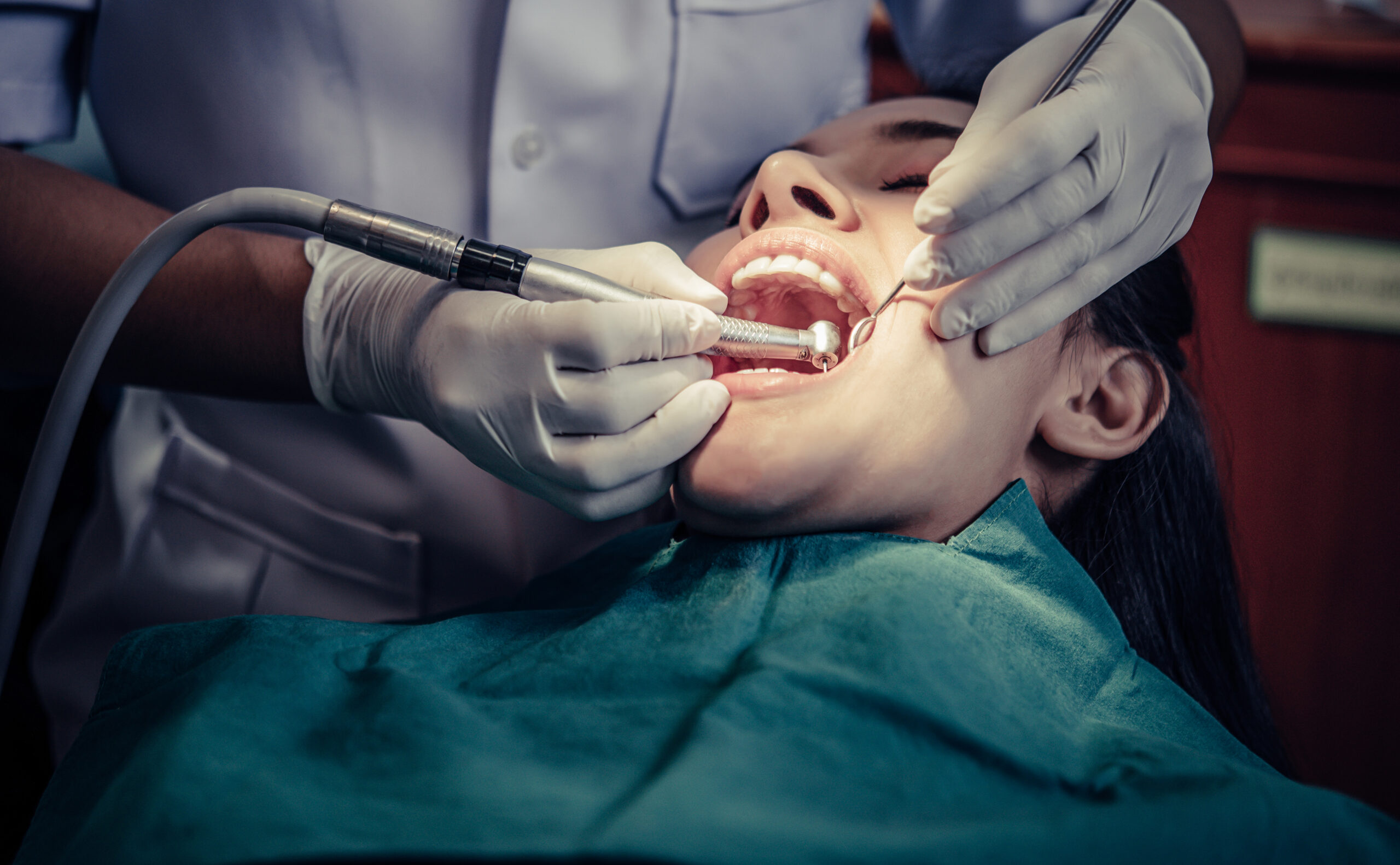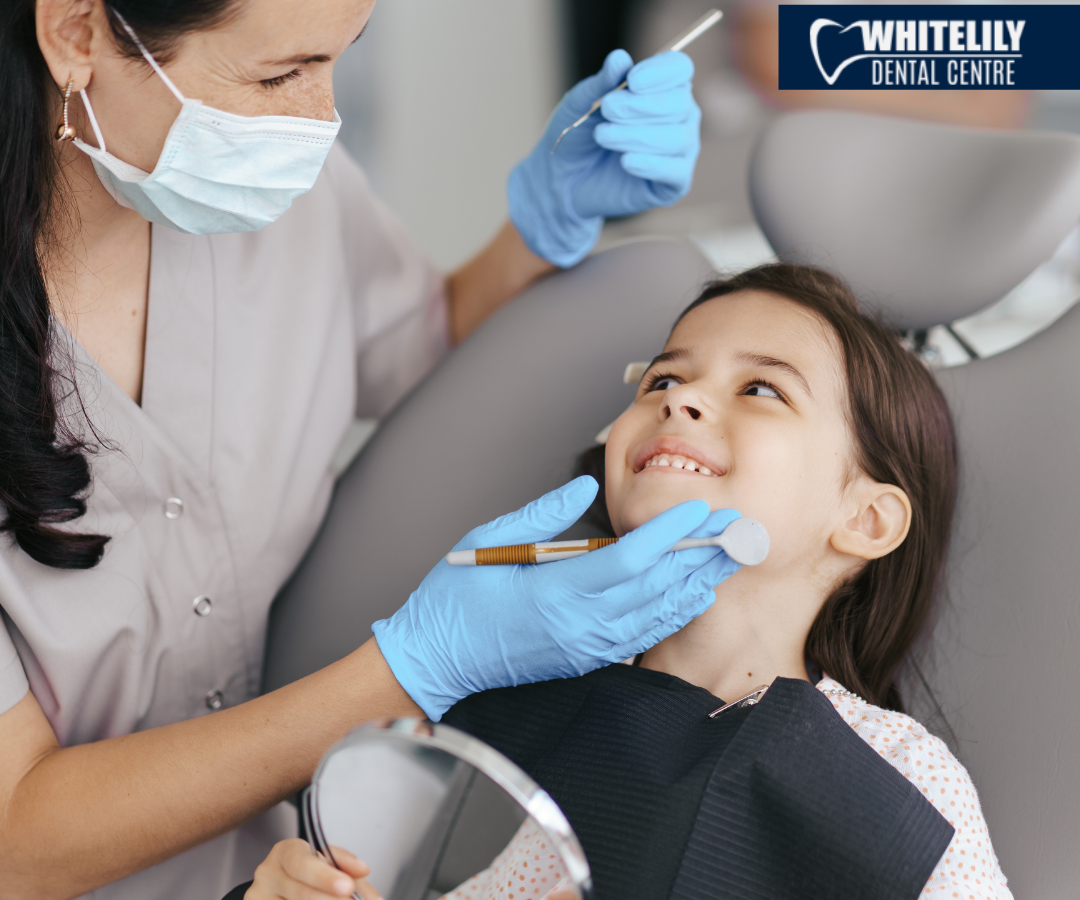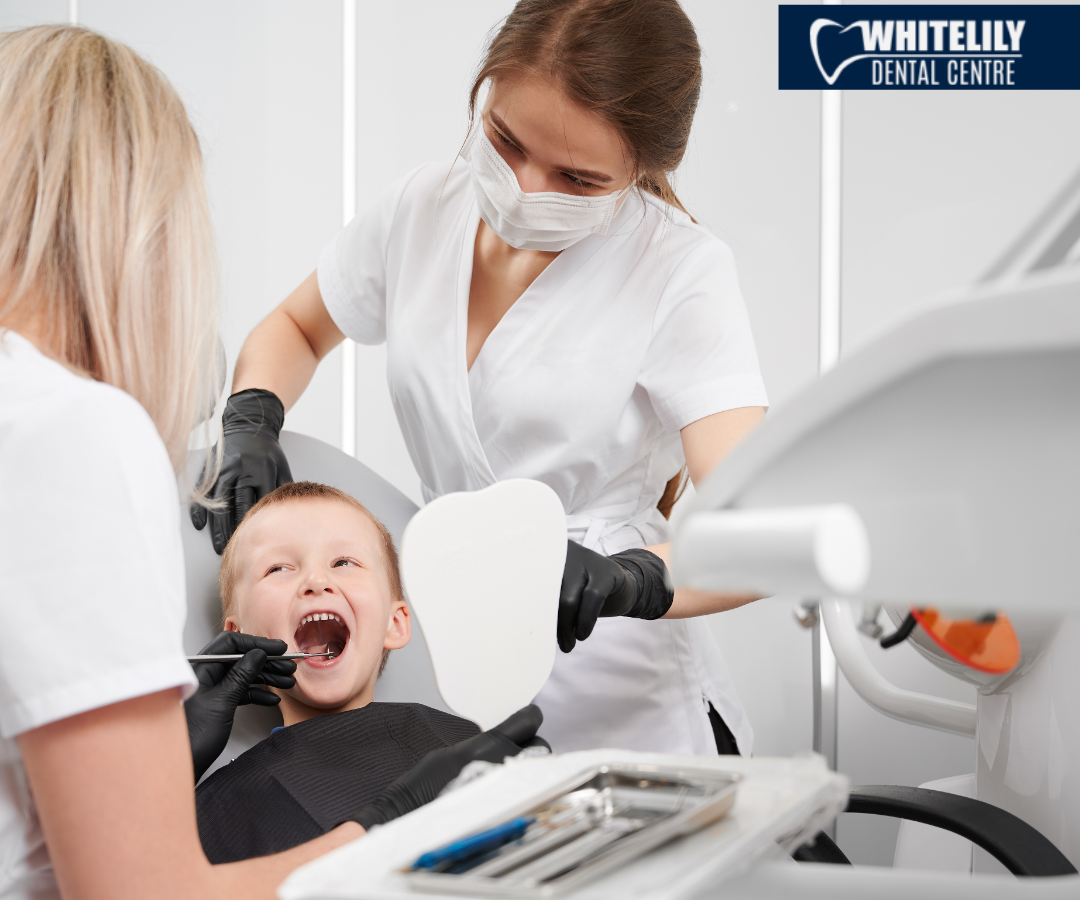Pediatric Dentistry – Child Dental Care in Oakville, ON
Children are more prone to common dental problems such as gingivitis and gum disease, tooth decay, and tooth sensitivity than adults. A dentist who exclusively helps adults maintain good oral health may not be equipped to understand the unique care needs of children.
The aim of pediatric dentistry is to manage and prevent dental problems in children. Pediatric dentists have received specialized training which allows them to treat dental problems in children and offer both preventive and therapeutic dental care.
Pediatric dentists have received additional training after dental school, typically a two- to three-year residency program, where they learn about the specific needs of children developing teeth, child behavior, and different stages of child development.
What Does a Pediatric Dentist do?
A pediatric dentist helps children care for their teeth and gums from infancy through the teenage years. Here are some roles and responsibilities of pediatric dentists.
- Preventive Dental Care: Pediatric dentists apply dental sealants to prevent cavities, and offer fluoride treatments. They also share oral hygiene tips with their patients and recommend foods to add to their diet for good oral health
- Diagnosis of Oral Conditions in Children: Pediatric dentists are trained to identify and diagnose conditions associated with stages of childhood development. Typical examples include teething, gum disease, and issues revolving around thumb sucking or the use of pacifiers
- Early Assessments: Pediatric dentists often conduct early assessments to better understand the nature of dental problems such as misaligned teeth and malocclusion in children
- Manage Dental Emergencies: Pediatric dentists are equipped to handle emergencies such as dental trauma resulting from accidents or sports injuries
- Management of the Teeth Development Process: Pediatric dentists monitor their patients’ oral health throughout the stages of tooth development, and may recommend orthodontic interventions to fix misaligned teeth or improper bites or any other dental problems they may diagnose
- Treatment: Pediatric dentists perform procedures to treat decayed teeth, gum disease, and dental injuries. They use different techniques and sedation methods to ensure patient comfort and reduce anxiety during dental procedures
Some Dental Problems Specific to Children
Children face several dental problems that may develop during different stages of child development. Some such issues include
Baby Bottle Tooth Decay: Commonly known as early childhood caries, baby bottle tooth decay happens when the bacteria in your child’s mouth are attracted to sugar stuck between their teeth, producing acids that can cause damage to your child’s teeth
Thumb sucking and pacifier use: Prolonged and frequent thumb sucking and pacifier use increase a child’s risk of malocclusion, a common cause of orthodontic problems, and other dental problems
Early tooth loss: Children can lose teeth prematurely due to decay or accidents. Early tooth loss can affect the alignment of permanent teeth, as primary teeth serve as placeholders for permanent teeth
Let White Lily Dental Clinic
Help Your Child Improve Their Oral Health
Help Your Child Improve Their Oral Health
White Lily Dental Care specializes in child dental care. Whether your child has misaligned teeth or has started to lose their baby teeth, we can help. We understand the principles of pediatric dentistry, Oakville and are equipped to create tailored treatment plans.
We are committed to helping our young patients improve their oral health. Our pediatric dentists share tips for healthy gums and teeth with their patients and parents regularly. If your child has a genetic predisposition to gum disease or any other dental problem, our team can create a personalized preventive care plan that focuses on reducing their risk of the dental problem.
Our pediatric dentists have undergone extensive training and understand the nature of the dental problems specific to children. They leverage their communication skills to communicate effectively with children and adolescents. Our pediatric dentists use different techniques to manage the behavior of their patients with dental anxiety and phobias and to make them feel comfortable during dental procedures.
We have created a child-friendly treatment environment. Everything from decor and dental equipment used by our pediatric dentists has been carefully selected to make dental visits less stressful for our young patients.
To make an appointment, call our office.
Frequently Asked Questions
If you have sensitive gums, it is important to consult with a dental professional before undergoing any teeth whitening treatments. They can evaluate your oral health, determine the cause of your gum sensitivity, and provide appropriate recommendations. Teeth whitening treatments may exacerbate gum sensitivity in some cases, but there may be alternative options available that are better suited for individuals with sensitive gums.
If you have braces or retainers, it is advisable to consult with your orthodontist or dentist before using any teeth whitening strips or trays. They can provide specific guidance on whether it is suitable to use such products with braces or retainers and recommend alternative options if necessary.
It is generally recommended to address any underlying dental issues, such as tooth decay or cavities, before undergoing teeth whitening procedures. Whitening products are designed to improve the appearance of healthy teeth and may not effectively treat dental problems. It is best to consult with a pediatric dentistry professional who can evaluate your oral health and provide appropriate treatment recommendations.
Some individuals may experience temporary side effects after teeth whitening treatments. These can include tooth sensitivity, gum irritation, or mild discomfort. However, these side effects are usually temporary and subside shortly after the treatment. One can always consult the dental care professional for related guidance.
The duration of teeth whitening results can vary from person to person. It depends on factors such as individual oral hygiene practices, dietary habits, and lifestyle choices. In general, the results of teeth whitening treatments can last anywhere from a few months to a couple of years. Regular maintenance and touch-up treatments may be required to maintain the desired level of whiteness.
Teeth whitening procedures, when performed correctly and under professional supervision, are generally considered safe and should not damage the enamel. However, excessive or improper use of whitening products or overusing home remedies could potentially lead to enamel damage. It’s essential to follow the instructions provided by the dental professional.
The suitability of tooth whitening for teenagers may vary depending on individual circumstances. It is generally recommended to consult with a professional who specializes in pediatric dentistry. They can evaluate the teenager’s dental health and determine if tooth whitening is appropriate or if alternative treatments would be more suitable.
Recent Blog Posts
7 Vital Pediatric Dental Care Tips Every Child Should Learn
Maintaining proper oral hygiene from a young age is not just about having a bright smile—it's a crucial aspect of overall health. The foundation for healthy teeth begins in childhood, making it imperative to instill good dental care habits early on. As a parent, you play a pivotal role
The Importance of Baby Teeth: A Parent’s Guide to Child Dental Care
As parents, ensuring the well-being of our children is a top priority, and this includes their oral health. Baby teeth, also known as primary teeth, play a crucial role in a child's overall development. This article serves as a comprehensive guide to Child Dental Care in Oakville, emphasizing the importance
Pediatric Dentistry 101: Early Care for a Lifetime of Healthy Smiles
Pediatric dentistry is a specialized branch of oral healthcare that focuses on the unique needs of children, ensuring they develop strong, healthy smiles from an early age. This article serves as a comprehensive guide to Pediatric Dentistry in Oakville, emphasizing the importance of early care and the role of a




